March 31, 2019
Our second day in Tokyo, and we had a full day tour. Today our guide was Himoto. She was really amazing – good English speaker and full of facts about Japan and Tokyo. She even showed us the meaning of some of the alphabet figures by holding up the symbol and having us guess what they were. And she showed statistics and had us also guess the meanings. Very interesting approach. Real estate in Japan is expensive as is almost everything else. A small condo is about $700,000 US. But they do not pay as much in taxes. She pays 10% of her income in taxes and she said only the very rich pay about 20%. Public university is about $5000/year but private universities are about the same cost as in the US. Medical schools are much more expensive.
The most serious issue, as I mentioned before, is the aging of the population. They have always resisted bringing in foreigners but a law was passed and goes into effect on April 1 to allow it as they need the workers and caregivers.
Tokyo is the capital of Japan (it was formerly known as Edo). The word Tokyo means eastern capital. The bay is 18 miles long which is why it took us some time to get into the port.
We again passed by the Olympic Village under construction. Himoto says it will be very hot during the Olympics – their summers are quite hot and humid but winters are quite mild. It was very chilly this morning, started at 41 degrees but warmed to 50 as we started our tour. Still, jackets, jeans and scarves were the wardrobe of the day.
Our first visit was to the Imperial Palace, home of the emperor of Japan. This is in the heart of the city. For 2 weeks each spring and fall, the palace is open to visitors. This is the spring open time, but the overwhelming crowds enabled us to just have time to see the outside of the palace and hear about the government. The current emperor is 86 years old and is retiring in April and the crown prince will take his place on May 1. The new era will be called “Good fortune with peace”. The emperor and his wife live here at the Palace, but the crown prince now lives in a separate residence surrounded by gardens. This is for security reasons. The emperor has no real power, the government is run by a prime minister. Here are pictures of Emperor Akihito and his family.
The palace grounds and waterways are beautiful. The bridge is called the Nijubashi Bridge and spans the moat.
I can’t stop writing about the bathrooms, I guess. All with the amazing toilets. As I have mentioned before, all of the restrooms are ultra modern and spotless. Many even have solution in them to clean them. But here was a first for me – what do you do with your baby when you are in the stall? toilet seat.
Our next stop was the Meiji Shrine which is the most renowned Shinto shrine in Tokyo. People here generally practice Shinto or Buddhist religions – Himoto said 80 % Shinto and 90% Buddhist which adds up to more than 100% because many people practice both. Shinto is quite interesting. Shinto or kami-no-michi (as well as other names) is the traditional religion of Japan that focuses on ritual practices to be carried out diligently to establish a connection between present-day Japan and its ancient past. They believe that spirits live in natural places. As I mentioned in the Kyoto post, when at a shrine, you bow twice, clap hands twice, pray then bow again. They believe in many spirits who are quite busy so you have to get their attention before you pray! There is no founder, no holy book and not even the concept of religious conversion. Shinto values harmony with nature and a sincere heart. Ancestors are revered and tied to many of the celebrations.
The Meiji Shrine is surrounded by a 200 acre park and while somewhat crowded, it was nothing like what we saw on the streets and in the Palace area.
Here, you pay respect at the font. First you rinse your left hand, then your right hand. You pour water into your left hand and rinse your mouth. Last you rinse your left hand and rinse the dipper.
Emperor Meiji passed away in 1912 and Empress Shoken in 1914. After their deaths, people wished to commemorate their virtues and to venerate them forever, so they donated 100,000 trees from all over Japan and overseas and they worked voluntarily to create the forest. The shrine was established in 1920 so will celebrate 100 years next year.
We were lucky to see two wedding processions while in the shrine. Notice the hair covering on the brides.
Another interesting thing we noticed here is the wishes that people wrote – they are all displayed openly and are in many languages. They are on what is called Ema boards or Japanese wishing planks. Here is what the area looks like and here are some of the wishes in English. Had to include one I spotted from “Philly”!
This rope between the trees is the marriage tree and you are supposed to have your picture taken under it. The lightning symbols are lucky because lightning signifies rain which is needed for rice to grow.
There was a display of these colorful sake barrels and also wine barrels as we left the shrine area.
After our visit here, it was time to go to the Jojoen restaurant for our Japanese lunch. It was both interesting and delicious. We were seated at tables for 4 (Ken and Ellen were with us). The center of the table had a fire grill and we were each presented with a plate of well marbled beef and one piece of pork to grill. We also had beer, salad, appetizers, tofu, rice and soup and a heart shaped ice cream for dessert. What fun!
After lunch we traveled to the Asakusa Kannon, the oldest temple in Japan dating to the 7th century. It is dedicated to Kannon, the Buddhist goddess of compassion. First we took a walk along the river where there were so many beautiful cherry trees in bloom. Here we saw a lot of young girls in their own or rented kimonos. These are not geishas in training (who avoid photos) but girls who want to be seen in their traditional dress. Some boys were seen in samurai dress as well.
The temple area was VERY crowded and we actually got separated in the crowds. Lucky to have text messages in that situation.
You could not take pictures in the Shinto shrine or in the temple. Here are some of the outside of the temple.
After our temple visit, we braved the crowds and did some wandering around the shops. I was looking for some of the Japanese cookies which I finally found in a store called Family Food Mart. They also have a 100 yen store which is our “dollar store”! The city streets and markets were very crowded with people but no motorbikes like in other Asian cities. Many of the streets are closed off on weekends, so since it was Sunday, we were walking in the streets. Many of the restaurants here have “fake food” on display so that people can point to what they want. Many vending machines are everywhere. Empty sake containers are for sale and many people use them for stools or just for decoration. The liquor stores have the full ones.
The building behind us is meant to look like a glass of beer with the foam on top!
We stopped in to a pachinko parlor – there are many gaming parlors in this area of the city.
They have Uber here.
And yes, they make fun of our president.
There were lots of families out and about, and having picnics along the river too.
Most of the buildings in the shopping areas have signs on the side to let you know what is on each of the floors. The worst earthquake was in 1923 when 140,000 people died so now most buildings are designed to withstand the worst. They have had many.
This is the Honda headquarters which is designed so that if windows break in an earthquake, the glass will fall into the balconies and not onto the street.
Ginza area is like 5th Avenue in New York, every high end store you can imagine is located here. There are plenty of Starbucks and all kinds of other American chain stores and restaurants. Here are some other sights of the city.
No overtime is allowed at work on Wednesdays. The main subway station has 40, yes, 40 different entrances. There are 13 subway lines but we didn’t try to use them – apparently they are not so easy to figure out. During rush hour, professional pushers are employed to push people along into the cars!
Our sail away was in the dark – here is the city by night as we left.
Tokyo is very clean and safe yet very crowded. We can’t wait to spend more time here next year!



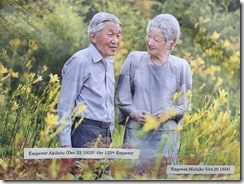




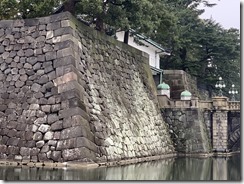










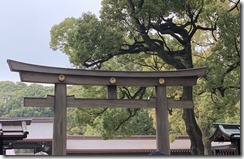
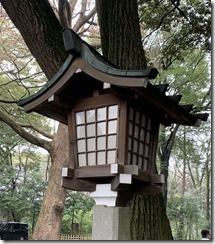




























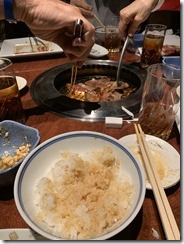




















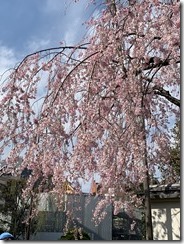
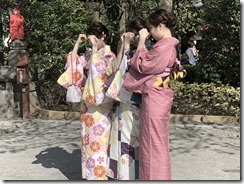


































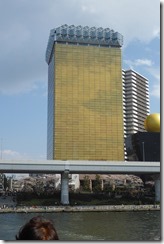















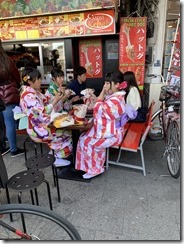








Gosh you pack in a lot. Amazing selection of photo’s from Tokyo – plans for next year eh? Happy cruising. Love Hilary xx
LikeLike
Yes, next year we are doing 33 days from Tokyo to San Francisco in June-July. We will go to Tokyo maybe a week early?. Not decided on that part yet…
LikeLike
What a great adventure!!!!!
LikeLike
Looks like you’re having a good time in Japan which makes me miss that place after reading your lovely post.
LikeLike